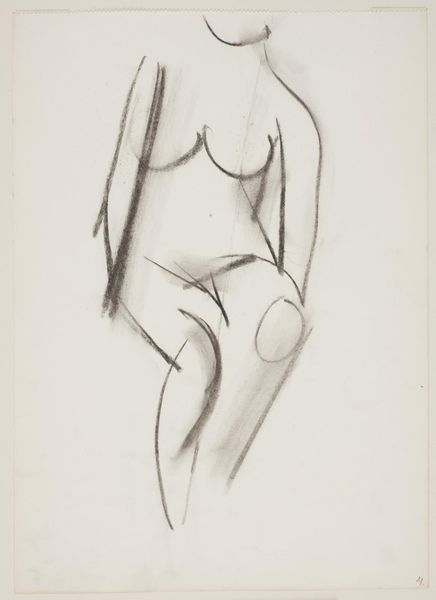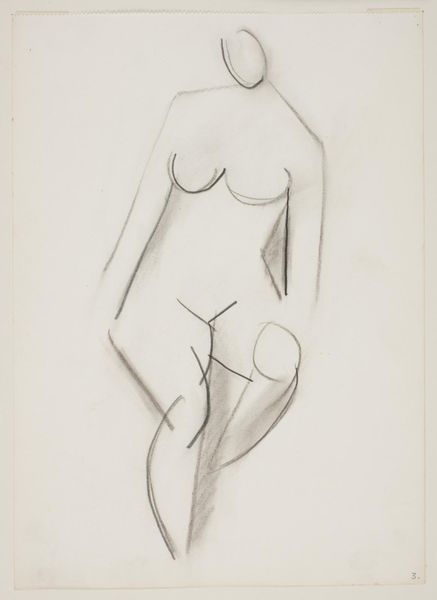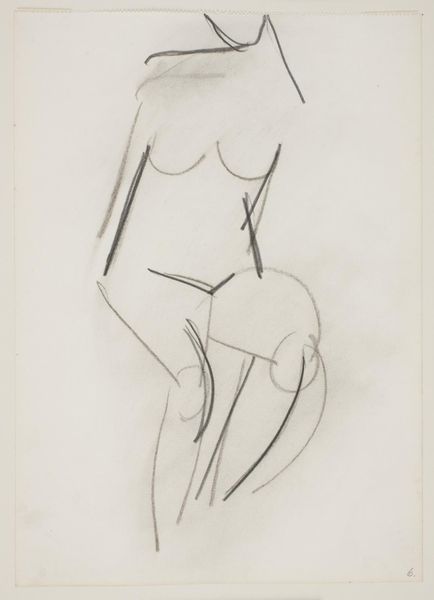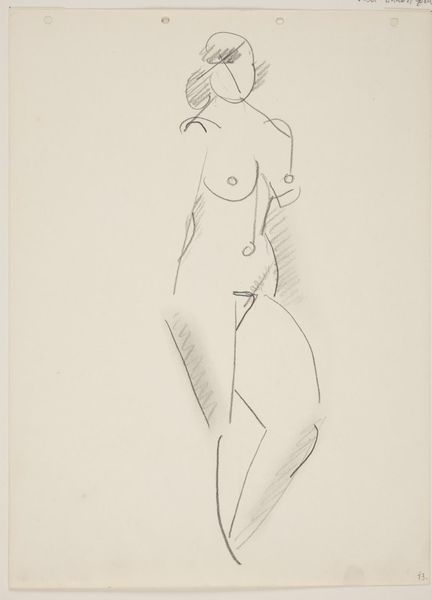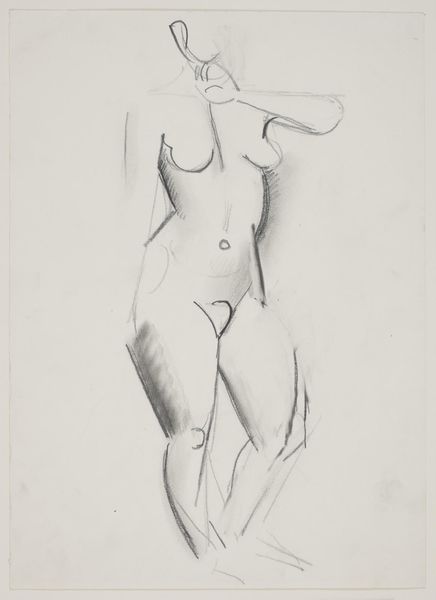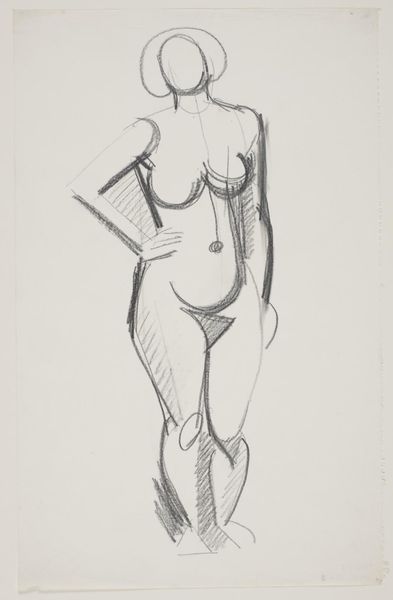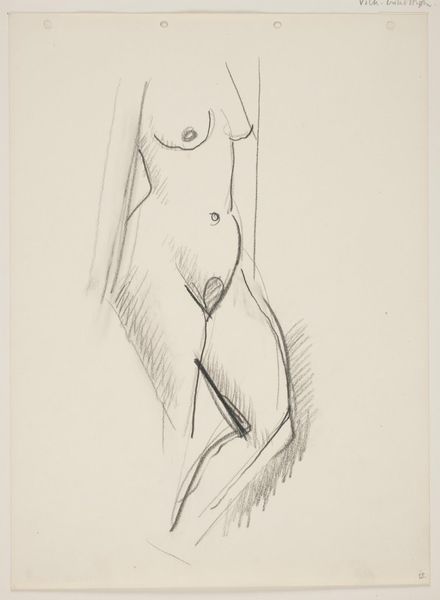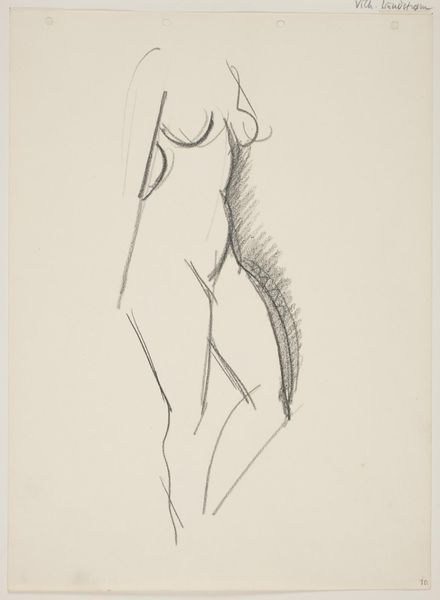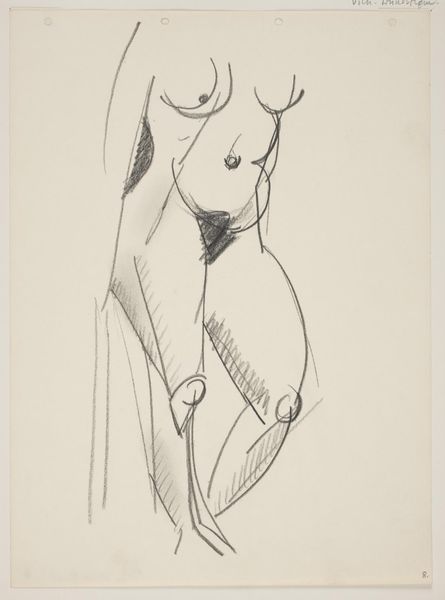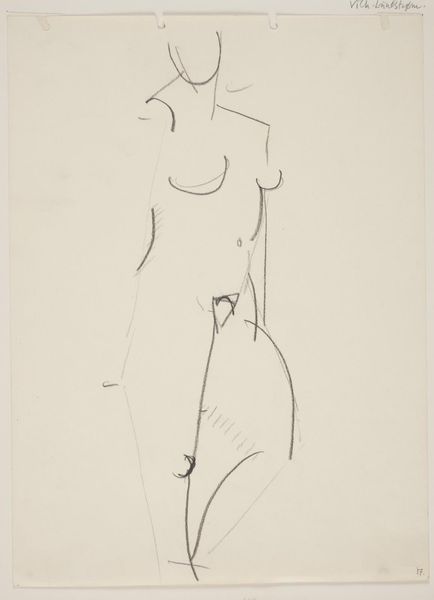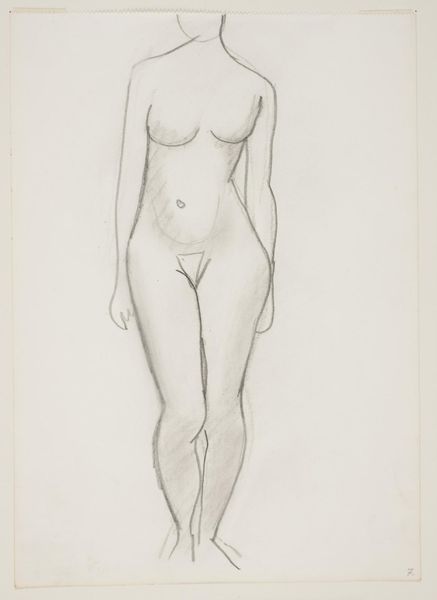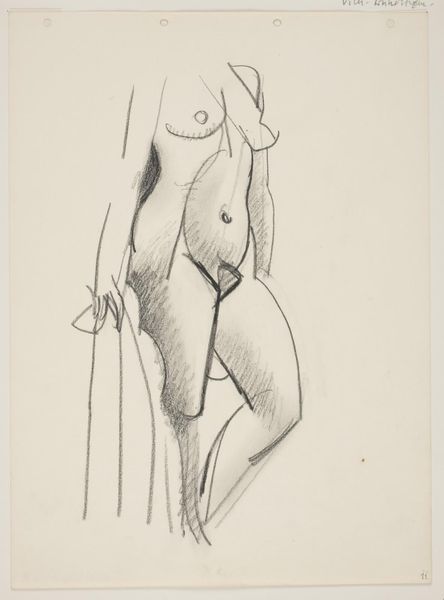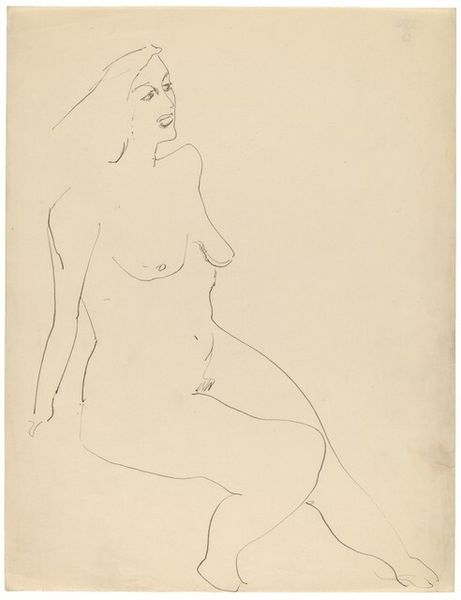
drawing, pencil
#
portrait
#
drawing
#
caricature
#
figuration
#
pencil drawing
#
pencil
#
abstraction
#
portrait drawing
#
nude
Dimensions: 255 mm (height) x 181 mm (width) (bladmaal)
Editor: This is "Seated Nude Woman, Front View" by Vilhelm Lundstrom, a pencil drawing from 1943-46. The stark simplicity and bold lines really grab my attention. It's abstract but still clearly figurative. How do you interpret this work? Curator: It's intriguing, isn't it? Looking at this through a historical lens, I think it's crucial to consider the context of World War II. The reduction of form, the near-caricature, can be read as a response to the instability and dehumanization of that era. Do you think this drawing, created during or just after a major conflict, engages in a form of social commentary? Editor: I hadn't thought of it that way, but it makes sense. The exaggerated simplicity almost mocks classical nudes. It definitely shifts the public's perception. Curator: Precisely. Lundstrom seems to be asking, "What is beauty? And what is our relationship to the human form, especially given the atrocities we’ve witnessed?" Also, consider the museum's role. By displaying this, the SMK invites viewers to consider these questions about perception, power, and the human body. How effective do you think it is at sparking this conversation? Editor: I think it works! It's a refreshing take. A classical nude would almost feel insensitive in comparison to the art and imagery made during such a dark time in history. Curator: Exactly! The deliberate distortion serves a purpose, reflecting a fractured sense of reality and the museum's commitment to showing works that challenge viewers to consider our place in society. Editor: I see that the image acts almost as a tool. It highlights how art evolves in response to socio-political pressures, offering insights into cultural anxieties and changing values. Curator: Precisely. This simple drawing then becomes a potent historical document. Thank you for the thought-provoking questions! Editor: Likewise! I’m leaving here with new perspective on interpreting art in context.
Comments
No comments
Be the first to comment and join the conversation on the ultimate creative platform.
